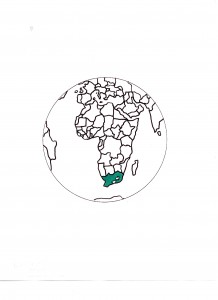SOUTH AFRICA
A. THE COUNTRY
The Republic of South Africa, with nine provinces, is at the
southernmost point of Africa. Since 1996 the constitutional democratic
government has been working hard to set up a free, non-racial
government. There is much disillusionment due to the slow rate of
change from apartheid, limited economic growth and increasing crime and
corruption. South Africa is the richest and most industrialized country
in Africa, with a strong agricultural base and some of the world’s
largest deposits of non-petroleum minerals – especially gold, platinum
and chrome. It is a well diversified industrial economy, with an
increase in finance and tourism.
B. THE PEOPLE
The population is ~50,493,000, with eleven official languages.
There is high unemployment and a vast gap between rich and poor.
AIDS remains a scourge with at least 14% of the population infected.
Nearly half of those with HIV have access to anti-retrovirals but half
of those also have tuberculosis.
Estimates for immigrants and asylum seekers from other African
countries, especially Zimbabwe, range up to several million.
~79.1% are Black African (46.4% Nguni, 24.3% Sotho-Tswana, 8.4% Other),
~8.9% White/Caucasian (declining by emigration and lower birth rates),
~8.9% Coloured (i.e. mixed race, ~2.8% Asian, ~0.3% Other).
C. RELIGIONS AND CHRISTIANITY/PENTECOSTALISM
Islam is one of the fastest-growing religious movements in South Africa.
Biblical Christianity continues to be strong and influential.
~75.24% claim to be Christian, ~13.5% Ethnoreligionist, ~7.73%
Non-religious, ~1.73% Muslim, ~1.2% Hindu, ~0.42% Baha’i, ~0.15% Jewish,
~0.03% Buddhist/Chinese.
In the Christian category:
~39.82% are Independent, ~15.21% Protestant, ~10.6% Unaffiliated, ~6.04%
Catholic, ~2.81% Anglican, ~0,1% Orthodox.
Evangelicals represent ~21.1% of the population.
Charismatics represent ~24.4% and of those ~12.4% are Pentecostals.
Donna Siemens
References:
http://en.wikipedia.org
Operation World, Jason Mandryk. Colorado Springs: Biblica Publishing, 2010.

